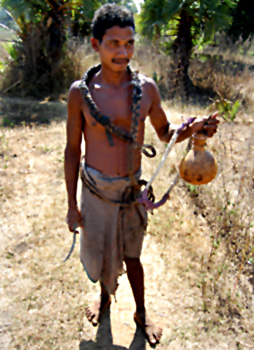 History of Dantewada District is quite clear and it talks about the various changes that lead to its formation. It specifies the fact that the present Dantewada District has come into existence in the year 1998. Previously it was a Tehsil of Bastar District. According to historical accounts, this district consists of all the features of Bastar District. Virtually, this district is the southern part of the Bastar region which is known as South Bastar and here the Bastaria culture is still alive. Even though this area has been unknown to the outer world due to its inaccessible geographical situation, it has got a glorious heritage. According to the famous epic of India, Ramayana, Lord Rama had taken shelter here during his exile. This place, known as Dandkaranya in those days, has thus been associated with Lord Rama as his Karmabhumi (the land of destiny).
History of Dantewada District is quite clear and it talks about the various changes that lead to its formation. It specifies the fact that the present Dantewada District has come into existence in the year 1998. Previously it was a Tehsil of Bastar District. According to historical accounts, this district consists of all the features of Bastar District. Virtually, this district is the southern part of the Bastar region which is known as South Bastar and here the Bastaria culture is still alive. Even though this area has been unknown to the outer world due to its inaccessible geographical situation, it has got a glorious heritage. According to the famous epic of India, Ramayana, Lord Rama had taken shelter here during his exile. This place, known as Dandkaranya in those days, has thus been associated with Lord Rama as his Karmabhumi (the land of destiny).
Inhabitants of Sindhughati (banks of Sindhu River) separated from Prag Dravidians in 1500 BC. One section of this separated group who reached Bastar has its mention in ancient Sanskrit Literature as Dravid speaking "Nag". Chhindak Nags were the ancestors of Gond Tribe. Bastar has been a colony of the rulers of the Satavahana dynasty from 72 BC to 200 AD. History of Dantewada District also suggests some traces of flourishing of Buddhism and Jainism before Nala dynasty that can be seen in this region. Further, tribal republican ruling system had existed in this region from 600 BC to 1324 AD, during the periods of Nalas (350 to 760) and Nagas (760 to 1324) which is worth mentioning. The system had gradually been ruined in the later periods. The down-fall of this ruling system was much more during the period of Chalukya Dynasty (1324 to 1774) destroying the splendid tradition of Gonds. The entry of outsiders had laid the foundation of Feudalism in this region.
As per the history of Dantewada District, the names of different dynasties or rulers of this region are Nalas (350-760 AD), Nagas (760-1324 AD), Chalukya (1324-1777 AD), Bhonsle (1777-1853 AD) and British (1853-1947 AD). Moreover, the capitals of Dantewada region at different times of the history are Chitapur, Rajpur, Dantewada, Bade-Dongar, Rajnagar, Bastar, Jagdalpur, Mandhota and Barsur.



















